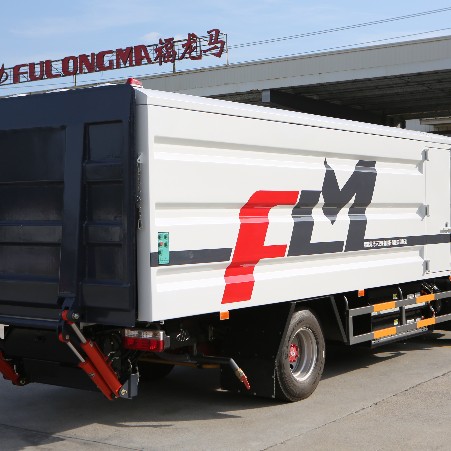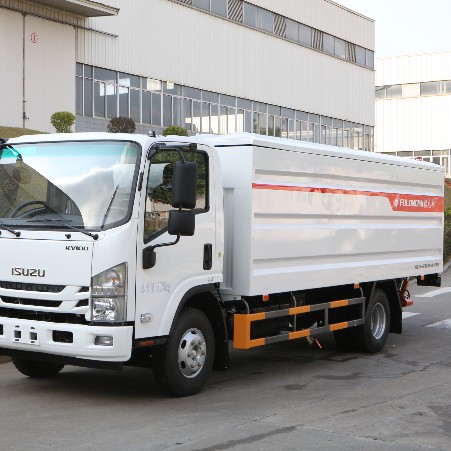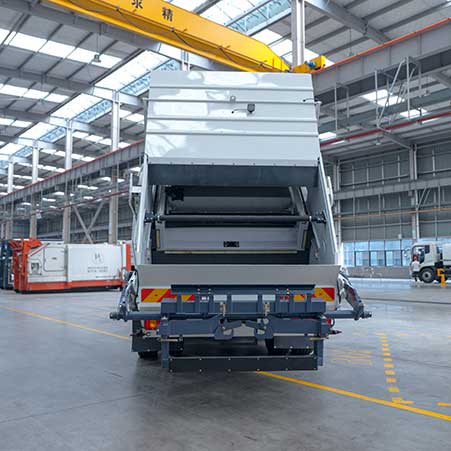In the hustle and bustle of modern life, waste management often takes a backseat in our daily priorities. Yet, collecting, transporting, and disposing of waste efficiently is a cornerstone of maintaining public health, cleanliness, and environmental sustainability. With urbanization and population growth, the demand for advanced and efficient waste management systems has never increased. Enter the sealed dustbin transfer truck – an innovative solution designed to revolutionize how we handle waste.
What is a Sealed Dustbin Transfer Truck?
A sealed dustbin transfer truck is a specialized vehicle designed for the efficient and hygienic transport of waste. Unlike traditional garbage trucks, these trucks are equipped with sealed compartments that prevent the leakage of waste and odors, ensuring a cleaner and more environmentally friendly method of waste transfer. They are an essential component of modern waste management systems, particularly in densely populated urban areas where waste generation is high.

Features and Components
Sealed Compartment
The hallmark of a sealed dustbin transfer truck is its airtight compartment. This feature ensures that all waste is contained within the vehicle, eliminating the risk of leaks and reducing odors. The sealed compartment is typically made from durable materials that can withstand the corrosive nature of waste.
Hydraulic Systems
These trucks are equipped with advanced hydraulic systems that allow for the easy loading and unloading of waste. The hydraulics are designed to handle heavy loads, making the process of waste transfer more efficient and less labor-intensive.
Compaction Mechanism
Many sealed dustbin transfer trucks come with built-in compaction mechanisms. These systems compress the waste, allowing the truck to carry more material in a single trip, thus increasing efficiency and reducing the number of trips required to transport waste.
Odor Control
In addition to the sealed compartment, these trucks often include odor control systems. These can range from simple air filters to more sophisticated chemical neutralizers that break down odorous compounds, ensuring that the truck does not emit unpleasant smells even when fully loaded.
Advanced Control Systems
Modern sealed dustbin transfer trucks are equipped with advanced control systems that allow operators to monitor and manage the truck’s functions efficiently. These systems can include GPS tracking, weight sensors, and real-time data transmission to waste management centers.

Uses and Applications
Sealed dustbin transfer trucks are versatile vehicles used in a variety of settings:
Urban Waste Management
In cities, these trucks play a crucial role in maintaining cleanliness and public health. They are used to transport waste from local collection points to central disposal or processing facilities, ensuring that waste is moved quickly and efficiently without causing environmental harm.
Industrial Waste Transfer
Industries generate large quantities of waste, often containing hazardous materials. Sealed dustbin transfer trucks are ideal for transporting industrial waste safely, thanks to their sealed compartments and robust construction.
Event Cleanup
Large public events such as concerts, festivals, and sports events generate significant amounts of waste. Sealed dustbin transfer trucks are often deployed to manage the waste generated during these events, ensuring that it is removed promptly and hygienically.
Disaster Response
In the aftermath of natural disasters, efficient waste removal is essential to prevent the spread of disease and facilitate recovery efforts. Sealed dustbin transfer trucks are used to transport debris and waste from affected areas to designated disposal sites.

Advantages of Using Sealed Dustbin Transfer Trucks
Hygiene and Safety
The sealed compartments of these trucks ensure that waste is contained, reducing the risk of contamination and the spread of diseases. This is particularly important in urban areas and during public health emergencies.
Environmental Protection
By preventing leaks and controlling odors, sealed dustbin transfer trucks help protect the environment. They minimize the risk of waste contaminating soil and water sources, contributing to overall environmental sustainability.
Efficiency
With features like compaction mechanisms and advanced hydraulic systems, these trucks can transport larger quantities of waste in fewer trips. This reduces fuel consumption and operational costs, making waste management more efficient.
Versatility
Sealed dustbin transfer trucks can handle a wide variety of waste types, from household garbage to industrial waste, making them a versatile solution for different waste management needs.
Public Perception
Using modern, efficient waste transport vehicles improves public perception of waste management efforts. Cleaner streets and reduced odors contribute to a higher quality of life in urban areas.
FAQs
What makes a sealed dustbin transfer truck different from a regular garbage truck?
A sealed dustbin transfer truck has an airtight compartment that prevents waste leakage and controls odors, unlike regular garbage trucks that may not offer such containment.
Are sealed dustbin transfer trucks more expensive to operate?
While the initial investment and maintenance costs may be higher, the efficiency and reduced number of trips can offset these expenses over time.
Can these trucks handle hazardous waste?
Yes, their sealed compartments and robust construction make them suitable for transporting various types of waste, including hazardous materials.
How do these trucks contribute to environmental protection?
By preventing leaks and controlling odors, they reduce the risk of environmental contamination and help maintain cleaner surroundings.
What infrastructure is needed to support the use of sealed dustbin transfer trucks?
Effective use requires transfer stations for waste consolidation, trained personnel, and compliance with regulatory standards.






